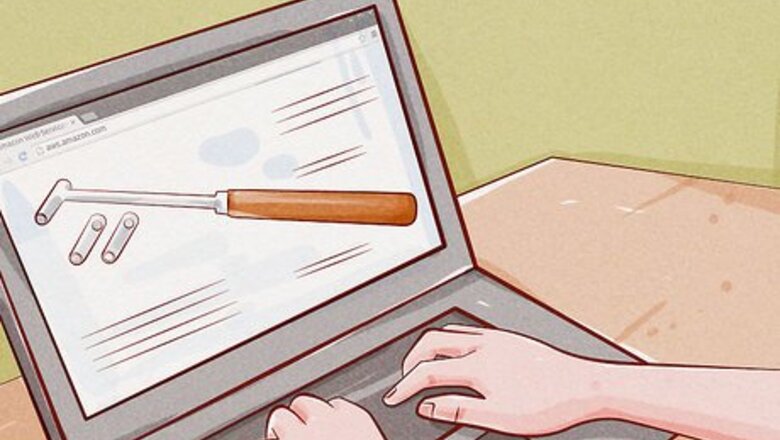
views
X
Research source
If you're tempted to tune your piano yourself, keep in mind this is a task that requires immense time and effort (you're talking about tuning 200+ strings as opposed to the 6 of a guitar), a strong ear, and a lot of patience.
Purchasing Tuning Tools
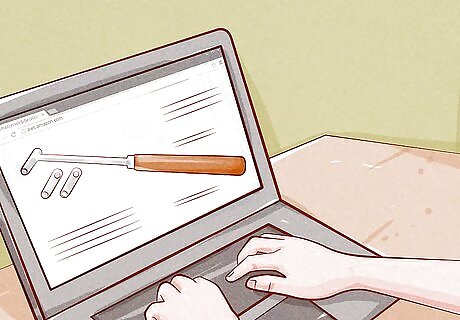
Shop at online specialty shops. Piano tuning tools can be hard to find, and may not be available at retail locations where you would normally find instrument supplies. You may be able to find quality tools at a brick-and-mortar piano specialty shop. Online retailers such as Amazon carry piano tuning tools, but you may have to do a little extra research if you want to make sure you're getting a quality product. Search for the name of the manufacturer, and read reviews carefully.
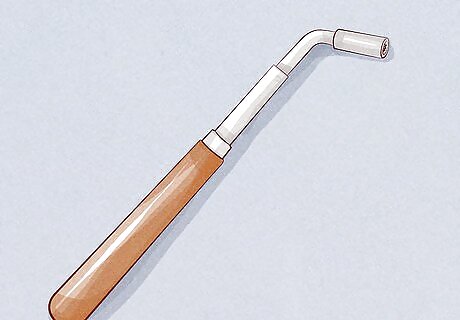
Get a piano tuning lever. The piano tuning lever may also be called a hammer, wrench, or key. This is perhaps the most important tool in your piano tuning tool kit, so be prepared to spend a little more money to get one of quality. Look for a model labeled "apprentice," "student," or "craftsman." These are professional-grade tools designed for beginners. You can usually find one for around $50. Generally, price is an indicator of quality. Buying a tuning lever is not the time to shop for bargains. Get the best lever you can within your budget.
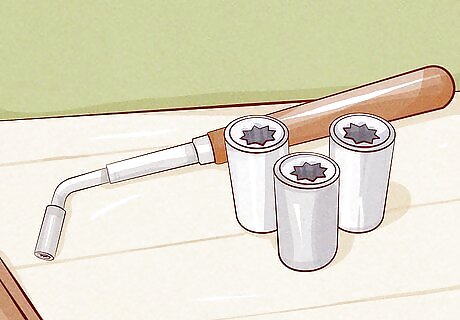
Choose the right tip size. Tuning levers have different sized tips. A larger tip will grab the pin further down and feel looser, while a smaller tip will grab the pin higher and tighter. If you're not sure what size to get, choose a #2. It's industry-standard and will work on most pianos. The smaller tip size, #1, is used on some European piano models. Some professional tuners prefer #1 because it gives them more control, but it's far easier to start with a #2. When replacing a damaged pin, tip #3 may be used because it grips more of the pin.
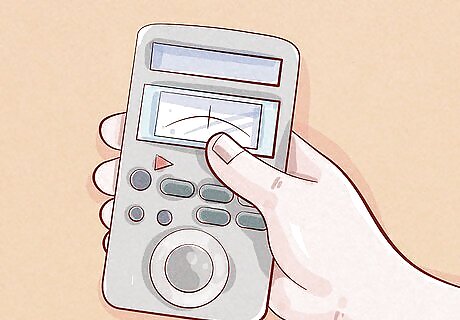
Invest in a quality chromatic tuner. An electronic tuner provides a reference tone for you so that you don't tune the note too sharp or too flat. You need a piano tuner, not a guitar tuner, because guitar tuners won't recognize all the notes you need. A quality handheld electronic chromatic tuner will set you back anywhere between $500 and $1,000.

Try tuning software if your budget is more limited. There are a number of companies that offer piano tuning software that may give you more control than a chromatic tuner. These programs typically retail for around $300, but you may be able to take advantage of a free trial before you purchase. With any software, you may need an external mic to get the best results. Don't rely on the built-in mic in your laptop. EXPERT TIP Cuong Nguyen Cuong Nguyen Music Teacher Cuong Nguyen is a Music Teacher and the Co-Owner of both OC Musica and the Huntington Beach School of Music. He has been teaching music for over 45 years and has extensive knowledge in music teaching pedagogy. He and his team of over 20 professional instructors specialize in teaching piano, voice, guitar, violin, brass, and woodwind instruments. Cuong is the 1984 winner of the Yoshiro Irino Memorial Prize in Composition. He received his Bachelor of Music with Honors from the Victoria University of Wellington, New Zealand. Cuong Nguyen Cuong Nguyen Music Teacher Invest in quality tuning tools. For tuning pianos, you'll need a tuning kit and an app like PianoMeter. Sure, you can find free trials of tuning apps, but to really dial in your piano's sound, invest in quality tools and pay for the full app. It's worth it for pro-level tuning.

Buy a variety of mutes. To start, get at least 6 or 7 different sizes and types of mutes. Some that work well with lower strings may not fit at all on the higher, shorter strings of the treble side of the piano. Mutes themselves are relatively inexpensive, typically only a few dollars a piece. Get some standard rubber mutes, as well as plastic tweezers and felt strips.
Tuning Your Piano

Gather basic tools to remove the piano's external panels. To tune a piano, you will have to take it (partially) apart to get to the strings. Examine your piano and determine what size screwdrivers or other tools you'll need to take it apart. Expect the inside of the piano to be dusty. A feather duster or a few rags will probably come in handy. You also may want to grab a strong flashlight or other source of light. No matter how bright the room is where you're working, you'll have a hard time seeing once you get into the piano.
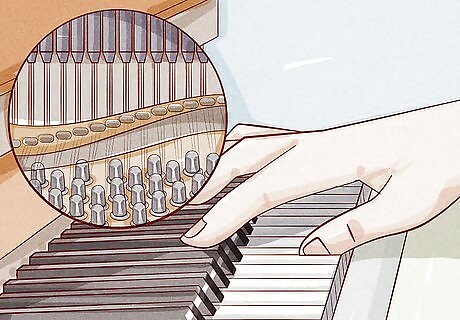
Get familiar with the strings and pins. Before you start working on the piano, play it a little with the panels off. Pay attention to which strings go with which keys, so you don't end up tuning the wrong string later on. It is relatively essential to have a decent understanding of music theory before you try to tune a piano. You should at least understand octaves and the relations of notes, because you aren't going to tune each note to perfect pitch. Rather, you tune the notes in relation to each other according to a concept called inharmonicity.
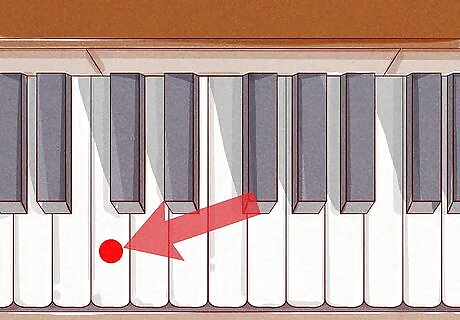
Start with middle C. The common tuning for most pianos is A440, meaning that the A4 is tuned so that sound waves vibrate at 440Hz. This is standard concert pitch in most of the Western world, although European tuning often is slightly higher at 442Hz. A mid-treble note, such as middle A, typically has 3 strings per note. Mute the first 2 strings so that only the third can be heard. Tune that string to match the tone on your chromatic tuner, then tune the other 2 strings to match that string. The other strings are called the unisons. When tuning the unisons, do it by ear – don't tune the unisons using your software or chromatic tuner.
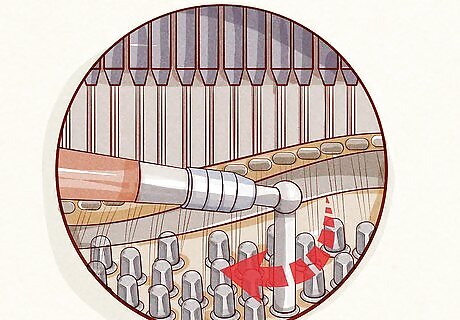
Turn the pin to tune the string. Place your tuning lever on the top of the pin and make a very slight movement to turn the pin. You only want the tiniest of movements or you could snap the string, so you may want to practice first so you have good control of your tool. Remember the phrase "righty tighty, lefty loosey." If you turn the pin right (clockwise), you raise the pitch. Turning it left (counterclockwise) will lower the pitch. Avoid wiggling or twisting the pin. If it becomes loose or damaged you'll need to call in a pro and have it repaired. Steady hands are important. Make a slight turn, then check the tone. Keep doing this until the sound of the string and the tone you are getting from your chromatic tuner or software program are in sync.
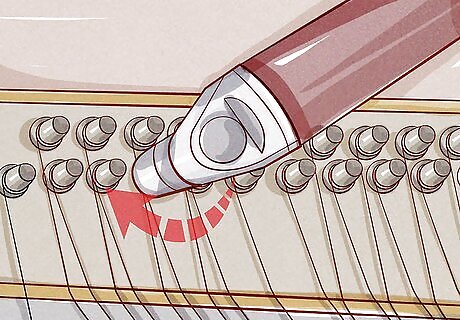
Set the pin. Once you've found the right tone, you need to set the pin so it doesn't easily slip out of tune again. Tighten the pin just a hair with a slight turn clockwise, then turn it even more slightly counterclockwise to loosen it back to correct pitch. It takes practice to get this delicate movement correct. Don't expect the first piano you tune to stay that way. After you've tuned several pianos (or tuned the same piano several times), you'll have a better feel for how to set the pin correctly.
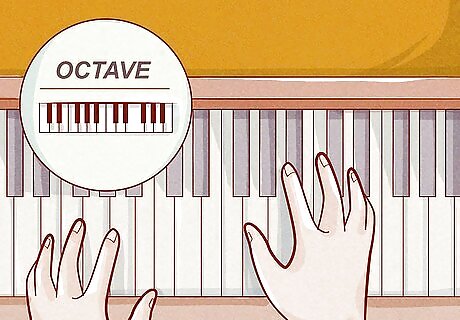
Tune in octaves relative to the first note tuned. Once you have middle A, use middle A to tune lower A. Then use lower A to tune the note one fifth above, and so on. Move along the keyboard using these intervals until the entire piano is tuned. Unless you are working with a severely neglected piano that hasn't been tuned in years, you'll typically find that you don't have to tune all the notes.
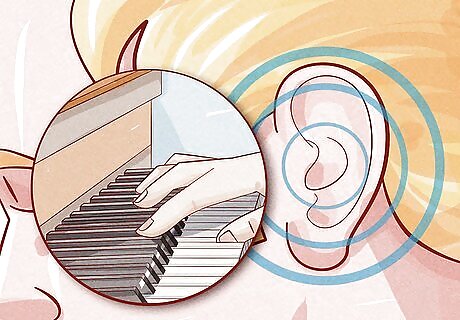
Check your progress with major third intervals. As you go, check the intervals and make sure they sound right. If something sounds sharp or flat, you can go back and correct it before moving on. As you move through the notes, you're going to be tuning more and more of the notes by ear rather than relying on your software or your chromatic tuner. If you tune every note using your chromatic tuner, by the time you cycle back to the original note it will sound sharp. Tuning your piano by ear will get easier as you gain experience. If you plan to advertise yourself as a piano tuner, it's important that you get lots of practice tuning before you try to do it for others.
Play the piano after you're done. Before you replace the panels, give the piano a quick play to make sure it sounds okay and all the notes have stayed in tune. Especially if this is your first time, you may find that you need to go back and do a little more work on it. Even for professional tuners, some pianos can take several days to tune correctly, especially if they haven't been tuned in quite some time or if they are played heavily. Patience is key if you want to tune a piano.


















Comments
0 comment